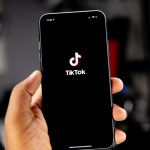News
Step by step the $1 trillion infrastructure package is becoming reality
The next phase of the US "Internet for All" initiative has kicked off with governors and other eligible leaders being invited to submit a letter of intent as a step towards unlocking $45 billion to give every U.S. resident access to high-speed internet by 2028. Each state will then get $5 million to help it consult with residents and write its plan for how they will use the money, reported to be a guaranteed minimum of $100 million per state – with an average payment closer to $800 million.
The funds will be distributed by the Department of Commerce’s National Telecommunications and Information Administration (NTIA) and comes from three sources: the $42.5 billion Broadband Equity, Access, and Deployment (BEAD) Program; the $1 billion Enabling Middle Mile Broadband Infrastructure Program; and State Digital Equity Act programs that add up to $1.5 billion.
The distribution of money is being overseen by Commerce Secretary Gina Raimondo who compared the provision of universal access to broadband internet to the 1930’s electrification of rural America, highlighting that over 30 million Americans don’t have internet and saying that "in this day and age without high-speed internet, you can’t go to school, can’t go to the doctor, can’t do simple things. Think of how many times in a day you Google something or go online.”
How the funding is used will vary by state, ranging from being used to lay fibre optic cable to building out Wi-Fi hotspots or even reduce monthly charges in places where price is the main challenge. New maps will be released in the Autumn illustrating where people lack internet services or are underserved, helping Governors and other leaders shape their final applications over a six month period.
Total Telecom is tracking the progress towards a more Connected America. Sign up for our focused newsletter here to keep up with the progress.

















